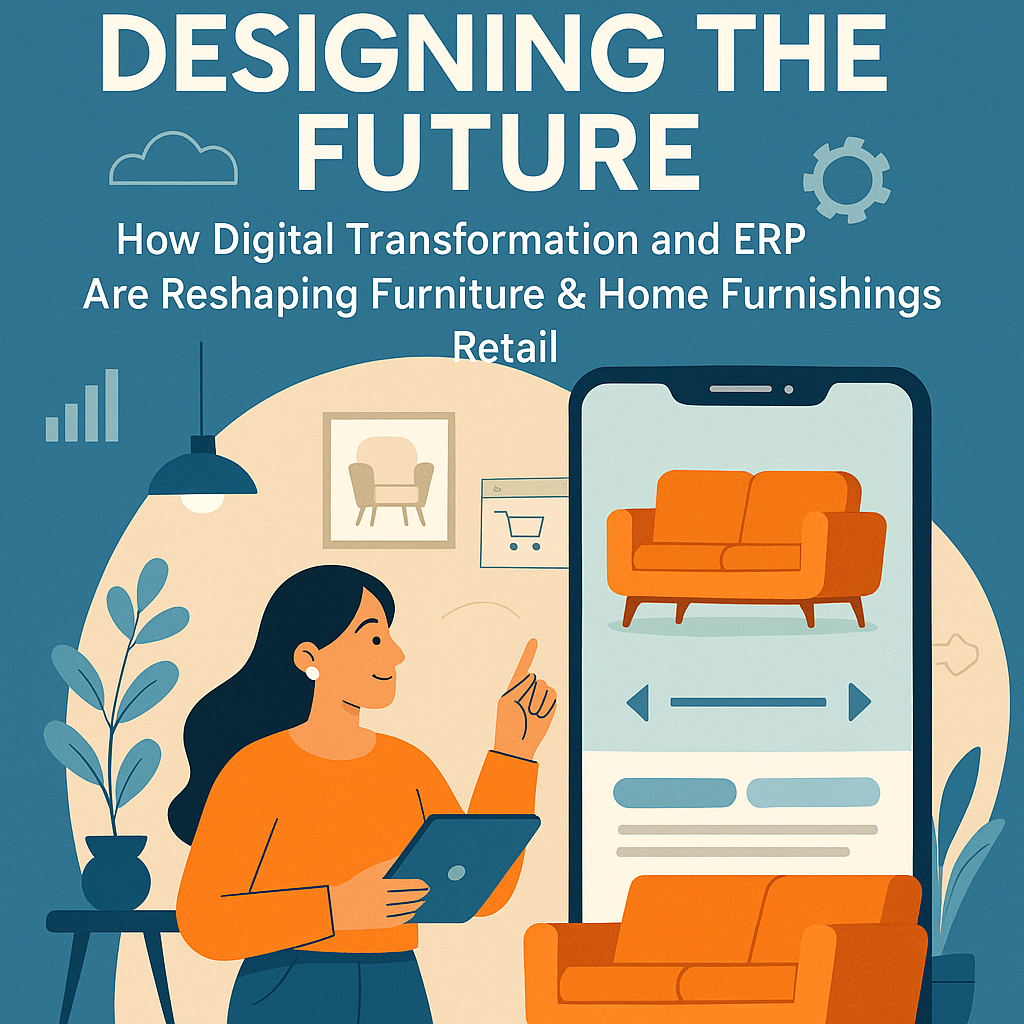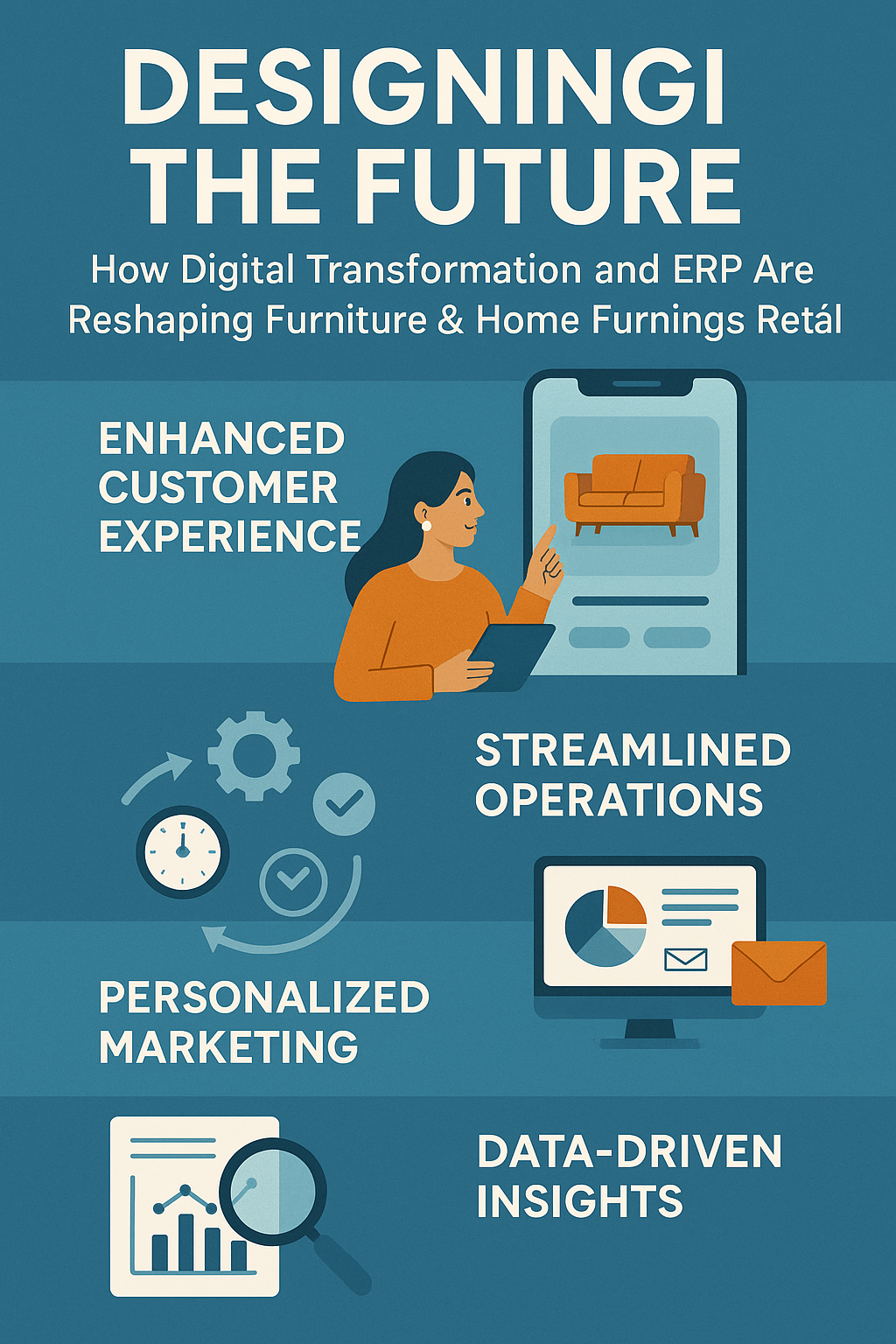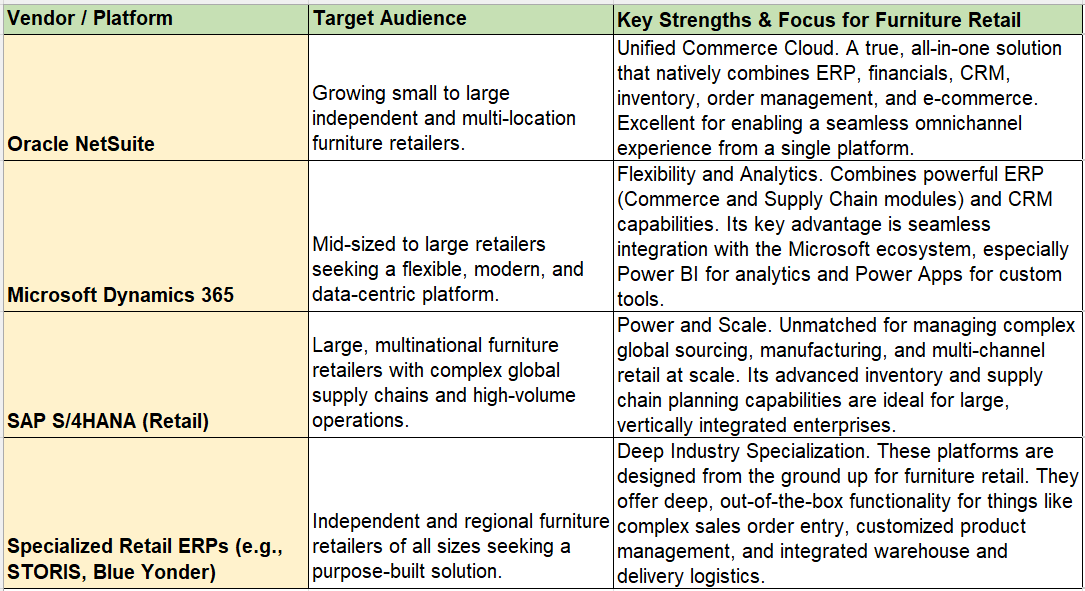Designing the Future: How Digital Transformation and ERP are Reshaping Furniture & Home Furnishings Retail
2025-09-10 · By Anil Kancharla · 7 min read
❤️ 0 Likes · 👁️ 0 Views
 AI-generated image for illustration purposes only.
AI-generated image for illustration purposes only.
Designing the Future: How Digital Transformation and ERP are Reshaping Furniture & Home Furnishings Retail
 AI-generated image for illustration purposes only.
AI-generated image for illustration purposes only.
Designing the Future: How Digital Transformation and ERP are Reshaping Furniture & Home Furnishings Retail
Our relationship with our homes has fundamentally changed. They are no longer just places to live; they are our offices, our sanctuaries, and our primary spaces for connection and self-expression. This shift has placed the Furniture and Home Furnishings Retail industry at the center of modern commerce. But selling a sofa is not like selling a smartphone. It’s a high-consideration, emotionally driven purchase with a complex journey from inspiration to installation.
As of 2025, furniture retailers are navigating a landscape of immense opportunity and significant challenge. They must blend the tactile, in-person experience of a beautiful showroom with the convenience and endless choice of the digital world. They are grappling with globally complex supply chains, the logistical nightmare of "last-mile" delivery for bulky items, and a new generation of consumers who demand personalization and sustainability.
In this new era, the retailers who will thrive are those building their business on a new blueprint—one defined by digital transformation. At the very foundation of this modern retail structure, connecting every product, every channel, and every customer, is a powerful Enterprise Resource Planning (ERP) system.
This in-depth blog post will explore the unique dynamics of the furniture and home furnishings industry, uncover the immense opportunities of its digital evolution, and provide a comparative analysis of leading ERP solutions designed to help retailers furnish a more profitable and resilient future.
The Modern Living Room: Challenges Facing Furniture Retailers in 2025
The path from a customer’s initial idea to a new piece of furniture in their home is long and fraught with potential friction. Modern retailers must solve for these core challenges.
- The "Phygital" Customer Journey: The modern furniture shopper exists in two places at once. They browse for inspiration on Pinterest and Instagram, read reviews online, and use augmented reality to see a chair in their space. But for a major purchase, they often still want to visit a showroom to touch the fabric, test the comfort, and speak to a design expert. Creating a seamless, consistent experience that bridges this physical and digital (phygital) divide is the number one challenge.
- The Labyrinth of Logistics and Inventory: This is the industry’s biggest operational headache. A single sofa can have dozens of SKUs based on fabric, color, and configuration options. Inventory is bulky, expensive to store, and difficult to handle. The "last-mile" delivery—getting a large piece of furniture into a customer's home without damage—is a complex, high-cost service that heavily influences customer satisfaction.
- Supply Chain Uncertainty and Long Lead Times: Many home furnishings are sourced from manufacturers across the globe, leading to lead times that can stretch for months. This makes inventory planning incredibly difficult and leaves retailers vulnerable to international shipping delays, fluctuating costs, and quality control issues. Communicating these long and often variable lead times to customers is a constant challenge.
- The Personalization Imperative: Customers no longer want a one-size-fits-all product. The rise of "Configure, Price, Quote" (CPQ), where customers can customize their own furniture, is a huge opportunity but also a massive data management challenge. Beyond the product, customers expect personalized marketing and recommendations based on their style and past purchases.
Designing the Future: Key Digital Transformation Opportunities
Digital transformation provides a powerful suite of tools to address these challenges head-on, allowing retailers to create a more inspiring, efficient, and customer-centric business.
-
Unified Commerce & The Endless Aisle This is the foundation for mastering the phygital journey. A unified commerce platform integrates the in-store Point of Sale (POS), the e-commerce website, and mobile apps into a single system. This enables a seamless experience where a customer can start a shopping cart online, have a store associate add to it on a tablet in the showroom, and complete the purchase at home. It also powers the "endless aisle," where in-store associates can use digital kiosks or tablets to sell products that aren't physically on the showroom floor, dramatically expanding the available selection without increasing inventory costs.
-
Augmented Reality (AR): Bringing the Showroom Home AR is no longer a gimmick; it's a critical sales tool in home furnishings. Mobile apps with AR "view in your room" functionality allow customers to place a true-to-scale 3D model of a sofa or table in their own living room. This bridges the imagination gap, increases purchase confidence, and has been proven to significantly reduce product returns.
-
Data-Driven Personalization and Design Services By analyzing a customer's browsing history, past purchases, and style preferences, retailers can deliver hyper-personalized marketing and product recommendations. This data also empowers in-store and virtual design associates, allowing them to provide more effective consultations and build long-term relationships with customers.
-
Supply Chain Visibility from Factory to Front Door Modern logistics platforms provide real-time visibility into the entire supply chain. Retailers can track a container from an overseas factory to the port, through the distribution center, and all the way to the final delivery truck. Providing this tracking information to customers is a powerful way to manage expectations and improve the post-purchase experience.
The Operational Backbone: ERP as the Single Source of Truth
With data from custom orders, e-commerce sales, showroom traffic, and a global supply chain, how does a retailer connect it all? How can they provide an accurate delivery estimate for a custom-configured sofa? This is the mission-critical role of an Enterprise Resource Planning (ERP) system designed for modern retail.
The ERP is the central hub that connects the customer-facing front end with the complex operational back end. It is the single source of truth for every product, order, and customer.
Core Benefits of a Furniture Retail ERP:
- Mastering Complex Inventory and Special Orders: An ERP built for furniture can handle the industry's unique inventory challenges. It manages complex product matrices (style, fabric, color, finish), tracks inventory across multiple warehouses and showroom floors, and handles the entire lifecycle of special-order and made-to-order items.
- Sophisticated Order Management (OMS): This is arguably the most critical ERP function for furniture. A powerful OMS manages the entire order lifecycle, from capturing a complex custom configuration (CPQ) to orchestrating fulfillment from multiple locations, managing backorders, and scheduling final-mile delivery.
- Integrated Logistics and Last-Mile Delivery: The ERP connects sales orders directly to the warehouse and delivery management systems. It helps optimize delivery routes, manage delivery fleet capacity, and ensures that the "white glove" delivery and assembly service is a seamless extension of the brand experience.
- Unifying Sales, Service, and Financials: The ERP provides a 360-degree view of the business. It connects sales data from all channels, manages customer service inquiries, and provides real-time visibility into financials, including calculating landed costs for imported goods and analyzing the true profitability of each product and sales channel.
Choosing Your System: A Look at Leading ERPs for Furniture Retail in 2025
The ERP market includes powerful platforms that can be tailored to the unique demands of furniture and home furnishings retail.

Furnishing a Better Future
The future of furniture and home furnishings retail is not about choosing between a beautiful showroom and a convenient website. It's about creating a single, harmonious brand experience that guides and inspires customers on their unique purchasing journey. The retailers who succeed will be those who use technology to make complex processes seem simple, to make long waits feel transparent, and to make every interaction feel personal.
By embracing digital transformation and building their business on the solid foundation of a modern, integrated ERP system, retailers can move beyond simply selling furniture and become trusted partners in helping people create homes they love.
💌 Enjoyed this article?
If you found this post valuable, subscribe to my newsletter for more insights on digital transformation, AI, and business innovation.
👉 Subscribe to the newsletterOr let’s connect on LinkedIn — I share weekly content that’s practical for CIOs, CFOs, and transformation leaders.
🔗 Connect with me on LinkedIn